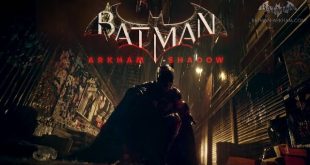Oculus VR made a lot of announcements at this year's Connect event, but one of the more exciting demonstrations was for a new wireless prototype called Santa Cruz. As well as untethering itself from a PC, it contains a battery pack, on board processing and self-contained positional tracking, meaning you can play in VR just about anywhere.
One of the biggest downsides to the first generation of virtual reality headsets, is that they are wired. While hardly as tethered as gadgets of yesteryear, you can still find yourself tripping over a cable, or having to take the immersion breaking step of kicking it behind you. That's unlikely to be the case with the second generation of hardware.
Santa Cruz is our first look at what a second-gen Oculus Rift might look like. Instead of trying to solve the problem of low-latency, wireless streaming, it instead puts processing on board, having the headset operate in a similar manner to Microsoft's Hololens, though presumably more powerful. It is of course unlikely to be anywhere near as impressive as what a wired headset can do, since they can leverage a full desktop's power, but PCGamesN claims that it's good enough. [yframe url='http://www.youtube.com/watch?v=LIUYDUlGJzM']
Purportedly it leverages a little bit of the cloud too, but for the most part processing will happen inside the headset.
As much as wireless play at a standard higher than the Gear VR is nice, what's more impressive is that the Santa Cruz can track you positionally without an exterior camera or laser system. That does at least tell us that generation two hardware will likely ditch all forms of exterior tracking.
That makes the headsets simpler, likely cheaper and much more versatile. No longer does your room need to be a perfectly uniform space.
KitGuru Says: It's all very much still in the early prototype phase – think DK2 and Crescent Bay – but this shows that the future of VR development is bright and that there's lots more to come.
 KitGuru KitGuru.net – Tech News | Hardware News | Hardware Reviews | IOS | Mobile | Gaming | Graphics Cards
KitGuru KitGuru.net – Tech News | Hardware News | Hardware Reviews | IOS | Mobile | Gaming | Graphics Cards


